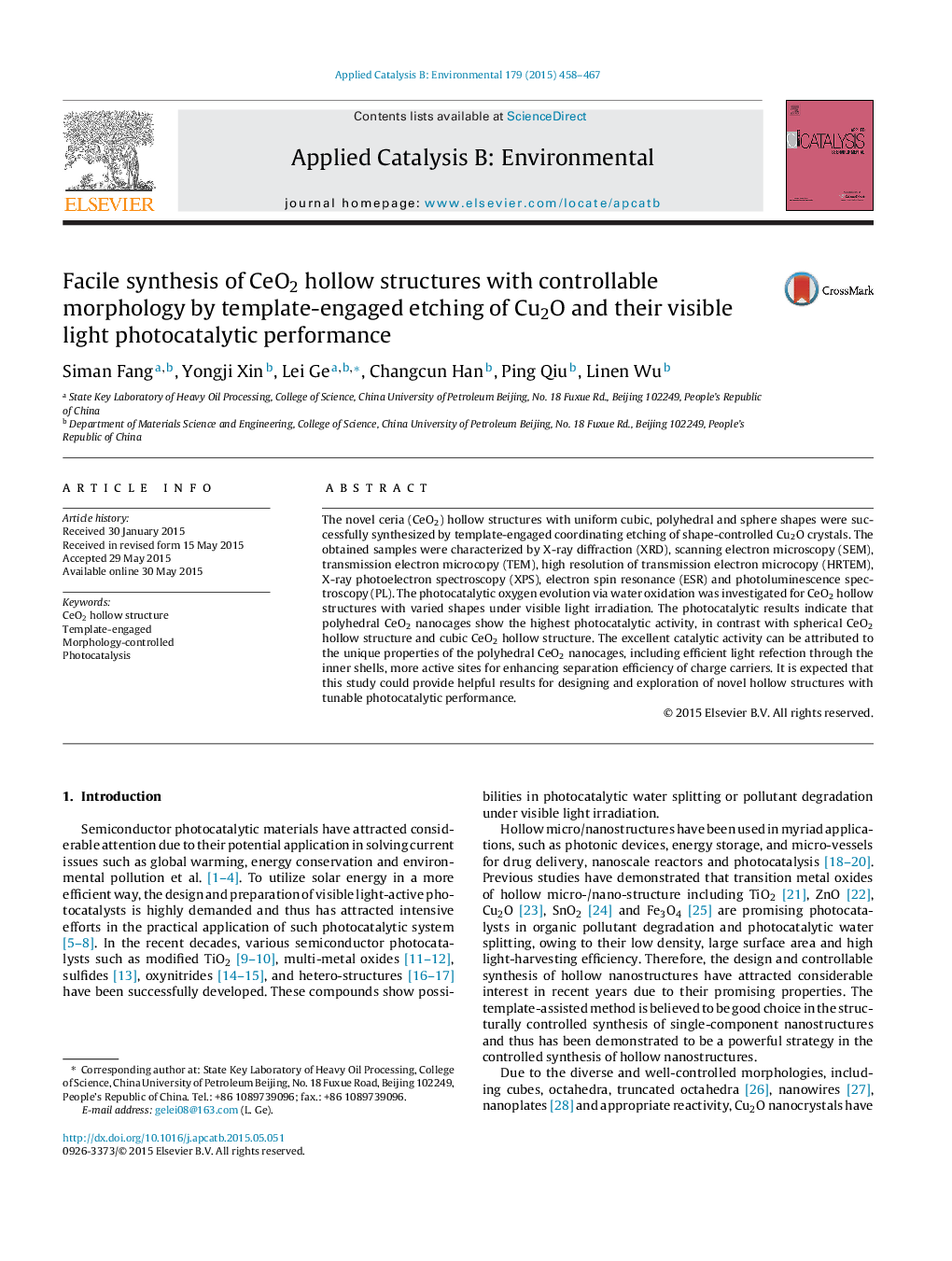| Article ID | Journal | Published Year | Pages | File Type |
|---|---|---|---|---|
| 45476 | Applied Catalysis B: Environmental | 2015 | 10 Pages |
•The cubic, polyhedral and sphere CeO2 hollow structures were synthesized by a template-engaged method.•The formation mechanism was reasonably explained by HSAB principle.•The polyhedral CeO2 nanocages show significantly enhanced catalytic activities.•The photocatalytic mechanism of CeO2 hollow structures was investigated.
The novel ceria (CeO2) hollow structures with uniform cubic, polyhedral and sphere shapes were successfully synthesized by template-engaged coordinating etching of shape-controlled Cu2O crystals. The obtained samples were characterized by X-ray diffraction (XRD), scanning electron microscopy (SEM), transmission electron microcopy (TEM), high resolution of transmission electron microcopy (HRTEM), X-ray photoelectron spectroscopy (XPS), electron spin resonance (ESR) and photoluminescence spectroscopy (PL). The photocatalytic oxygen evolution via water oxidation was investigated for CeO2 hollow structures with varied shapes under visible light irradiation. The photocatalytic results indicate that polyhedral CeO2 nanocages show the highest photocatalytic activity, in contrast with spherical CeO2 hollow structure and cubic CeO2 hollow structure. The excellent catalytic activity can be attributed to the unique properties of the polyhedral CeO2 nanocages, including efficient light refection through the inner shells, more active sites for enhancing separation efficiency of charge carriers. It is expected that this study could provide helpful results for designing and exploration of novel hollow structures with tunable photocatalytic performance.
Graphical AbstractFigure optionsDownload full-size imageDownload as PowerPoint slide
